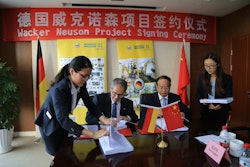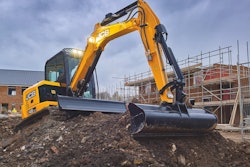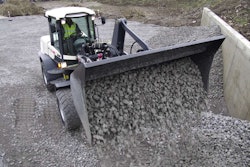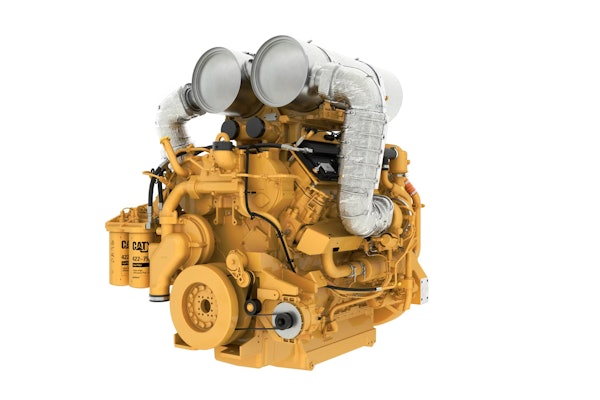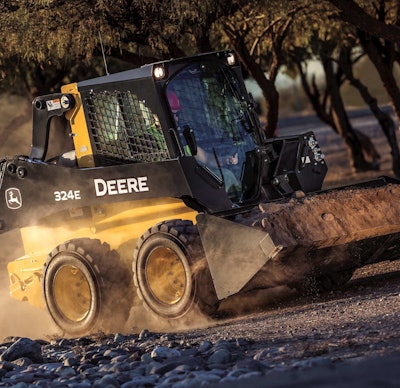
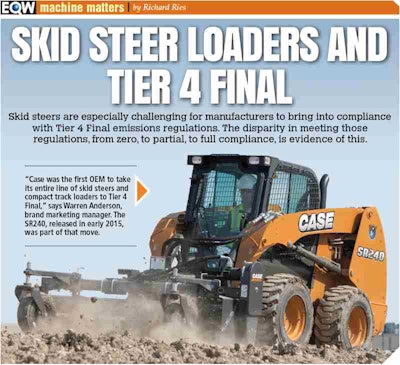
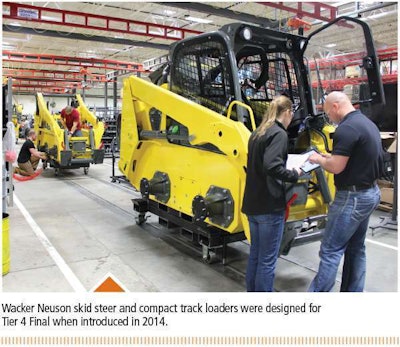
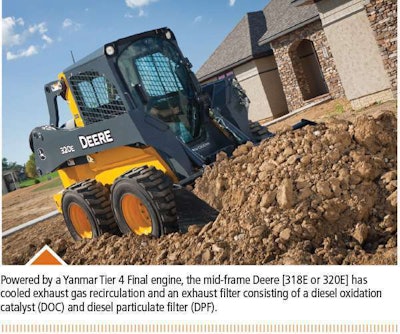
Flexible deadlines
In theory, all skid steers should now be Tier 4 Final compliant (see sidebar for timelines). In reality, they aren’t. Because of the stringency of the Tier 4 Final emissions standards, the EPA created the Transition Program for 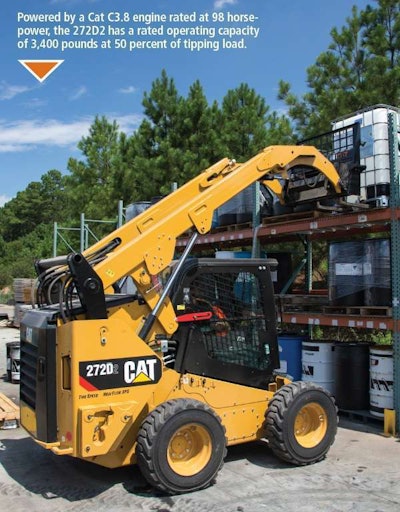
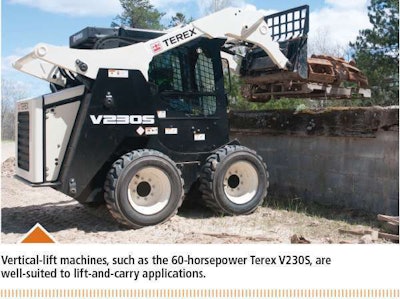
At the other end is IHI, also with two skid steers, neither of which will meet Tier 4 Final standards until late 2017. In the meantime, IHI is relying on the small volume allowance provision of TPEM, by which OEMs can produce and sell a limited number of non-compliant machines – for now. When IHI transitions to Tier 4 Final, they’ll evaluate engine options. Both the 21-horsepower AS-12 and the 82.2-horsepower AS-34 currently use Yanmar engines, as did both of their compact track loaders. When bringing their CTLs into Tier 4 Final compliance, IHI kept the Yanmar engine on the 67-horsepower CL-35, but went with Kubota for the 83-horsepower CL-45. “Our AS-34 needs to stay at or near its current horsepower rating to retain its performance,” says Michael Aubrey, product support for IHI Excavator Sales. “We’ll look at engine options to fill that need.”
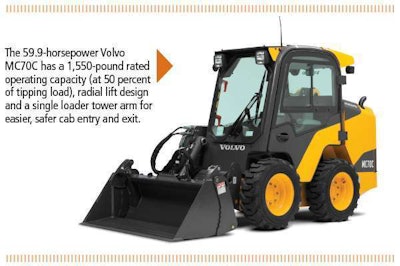
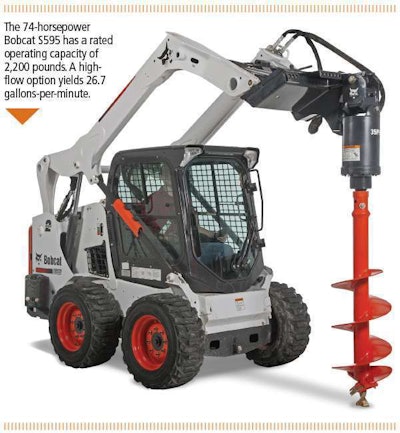
Bobcat added two models at 74 horsepower. The new S740 shares the same frame as the 85-horsepower S750 and the 92-horsepower S770. The new S595 shares the smaller frame of the 66-horsepower S590. The horsepower of their existing model lineup was unaltered by Tier 4. (Frame sizes are relative; Bobcat has six.)
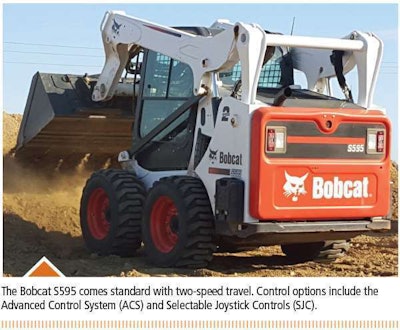
Beyond horsepower
Skid steer manufacturers also hasten to add that it’s not all about horsepower. The efficiency of hydraulic systems has become a key consideration. On larger machines, where horsepower was dropped to 74 because of Tier 4, Volvo says it went to a load-sensing piston pump that’s 15 percent more efficient and requires less engine load to do the same amount of work.
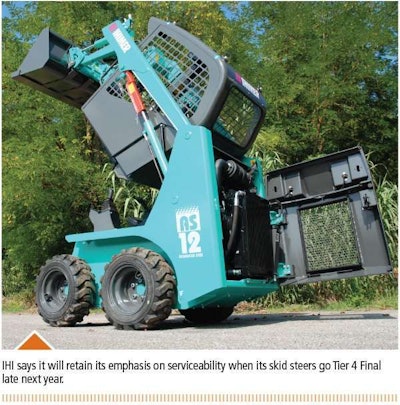
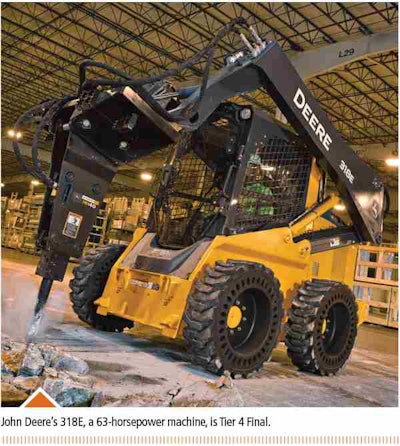
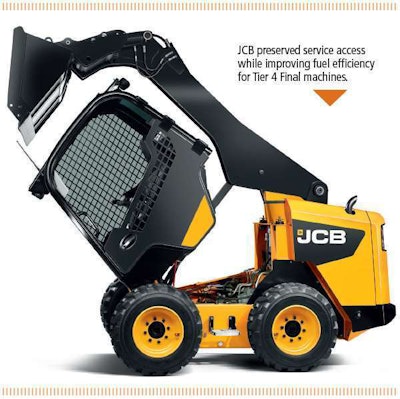
“One of the biggest challenges manufacturers face in Tier 4 compliance is finding an engine manufacture partner,” says Gregg Warfel, district sales manager of compact equipment for Terex. He says the engine supplier must have a broad range of engine options readily available, and must be able to tailor engine packages to meet the equipment OEM’s needs. The physical bulk of the aftertreatment components and larger cooling packages needed to handle Tier 4 engines’ increased heat rejection is especially problematic in compact machines, such as skid steers.
Even with the right engine package, it’s still a challenge to ensure customers have easy access to service points. Brown says Caterpillar prioritizes access. Aftertreatment components generally require less frequent servicing, if any at all, so they’re deeper inside the machine. Items serviced more frequently, such as filters, are placed in more easily accessible locations.
Kevin Scotese, compact product manager at Volvo Construction Equipment, says matching a machine to an application is no more difficult now than it was before the Tier 4 shuffle occurred. “You still have to look at what you want to do, the applications and attachments that apply to your work, and find a machine that’s rated for those operations.”
Cost equations
Much of the Tier 4 Final value equation doesn’t involve the engine. OEMs have tried to soften the blow of paying for Tier 4 Final by bundling other features into the package. Warfel says that GEN2 skid steers from Terex have improvements to their hydraulics, cooling, rated operating capacities, lift and tie-down points, hose and electrical routings, operator visibility, and ergonomics, among other things.
Depending on the number and type of features, the cost increase can be in excess of $12,000, or more than 20 percent of the cost of an earlier model of comparable rating. Brown says that even assuming a cost increase of only 10 percent, “if that cost is passed on to customers without additional performance and features, then what is the value received?”
Part of the reason for this bundling, Coffey says, is that customers are unwilling to pay anything for emissions compliance; the costs of those add-ons are a dead loss to the owner. But, customers will pay for features that lower operating costs and increase productivity.
The other factor, says Coffey, is the overlap in the past of Tier 3, Tier 4 Interim and Tier 4 Final, and the influence of TPEM. “The Tier 4 Final engine alone might only be $1,000 more than a Tier 3 or Tier 4 Interim engine, but who would pay for something of little or no perceived ROI when Tier 3 and Tier 4 Interim machines were still available? Early adopters of Tier 4 Final were effectively penalized, and adding to the list of standard features was one way to reduce that penalty.” Once the benchmark was set, there was no turning back.
The strategy was effective; the details of the price hikes were smeared and no single element could be related to a specific cost, least of all Tier 4 Final. “When considering the cost increase associated with the equipment and the selected emission solutions, it’s hard to isolate the cost of the emissions solution,” says Brad Stemper, solutions marketing manager for Case Construction Equipment. As did other OEMs, Case made multiple changes, including updating fuel systems and integrating additional and more sophisticated electronic controls, creating an overall smarter machine. “So, it’s hard to say that any cost increases were a premium caused entirely by the compliance needs.”
The net effect, says Stemper, is that the factors that matter most, including lift pattern, lifting capacity, and hydraulic performance, remain unaffected (or in many cases have improved) in machines where horsepower was lowered to allow for simpler emissions solutions.
Manufacturers are divided on the need to “de-emissionize” or “de-tier” equipment for sale to lesser-regulated countries once the original owner is done with the machine. George Chaney, sales manager for skid steer and compact track loaders at JCB, says their machine can have this done once in their lifetimes. “By allowing sales to countries with lower emissions standards, the residual value of the machine is enhanced when compared to one that can only be resold in countries with standards similar to our Tier 4.” Fitzgerald, on the other hand, says Bobcat skid steers are not designed for “de-tiering.” “The cost of implementing those changes would be prohibitively high on used machines.”





